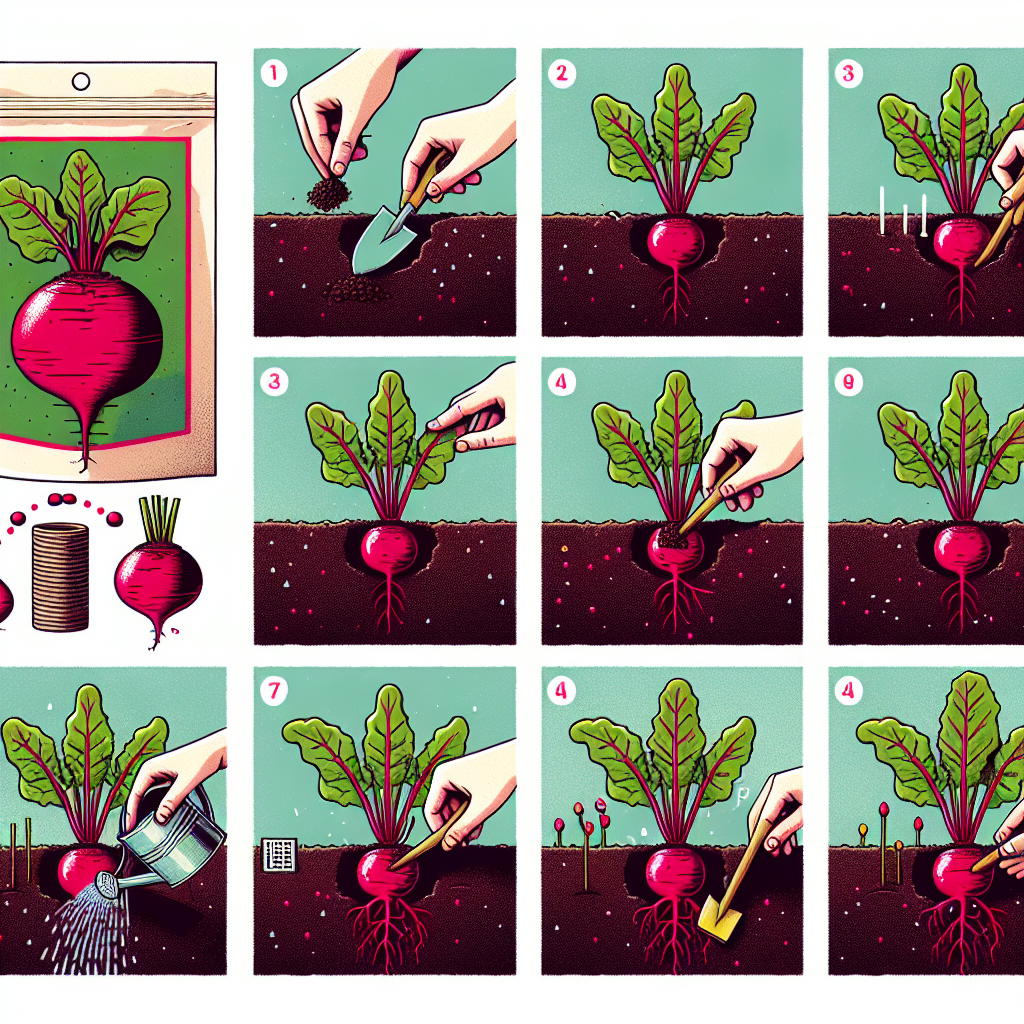
Beetroot plants how to grow
Introduction to Beetroot Plants
Beetroot, often referred to simply as beet, is a vibrant and nutritious root vegetable known for its deep maroon color and earthy flavor. Growing beetroot plants is not only rewarding but also beneficial, as these vegetables are packed with essential nutrients. Whether you're a seasoned gardener or a beginner, understanding how to grow beetroot plants can enhance your gardening experience and lead to a bountiful harvest.
Understanding Beetroot Plants
Before we delve into the nitty-gritty of growing beetroot, it's essential to comprehend what these plants are. Beetroot (Beta vulgaris) belongs to the same family as chard and spinach. They thrive in various climates and can be grown in different soil types, making them versatile for home gardens.
Beetroots are grown for both their roots and their greens. The leaves are edible and can be used in salads, while the roots can be roasted, pickled, or juiced, adding a unique flavor and color to your dishes.
Choosing the Right Variety
When deciding on beetroot plants, the first step is selecting the right variety. There are numerous types of beets, each with specific characteristics. Here are some popular varieties:
- Bulls Blood: Known for its vibrant red color and sweet taste.
- Chioggia: Famous for its striking red and white striped interior.
- Golden Beet: Offers a sweeter flavor and stunning yellow color.
Preparing Your Garden
The next step in learning how to grow beetroot plants is preparing your garden. Beetroots prefer full sun and well-draining soil. Here are some critical points to consider:
- Sunlight: Aim for at least 6 hours of direct sunlight daily.
- Soil Type: Loamy or sandy soil is ideal, with a pH between 6.0 and 7.0.
- Soil Preparation: Loosen the soil to a depth of 12 inches. Incorporate compost or well-rotted manure to enhance soil fertility.
Planting Beetroot Seeds
Once your garden beds are ready, it's time to plant your beetroot seeds. Here are the steps:
- Choose the correct planting time. Beetroots can be sown in early spring or late summer for a fall harvest.
- Plant seeds about ½ inch deep and 2-3 inches apart in rows spaced 12-18 inches apart.
- Water the seeds well after planting, ensuring the soil remains moist but not waterlogged.
Thinning Seedlings
After your beetroot seeds germinate, typically within 5 to 10 days, it’s crucial to thin the seedlings. Thinning helps ensure that each plant has enough space to grow and prevents overcrowding.
“Thin seedlings to about 3-4 inches apart to encourage healthy growth and larger roots.”
Watering and Mulching
Watering is a crucial aspect of growing beetroot. Here are some guidelines:
- Beetroots need consistent moisture, especially during the early stages of growth.
- Water gently to avoid washing away the seeds.
- Avoid overhead watering to reduce the risk of fungal diseases.
Mulching around the plants can help retain moisture and suppress weeds. Use organic materials like straw or shredded leaves for effective mulching.
Nutrient Requirements
Beetroots are heavy feeders and require adequate nutrients to thrive. Here are essential nutrients to consider:
- Nitrogen: Important for leafy green growth.
- Phosphorus: Promotes strong root development.
- Potassium: Enhances overall plant health and resilience.
Consider applying a balanced fertilizer or organic compost at planting and again when the plants are about 4 inches tall.
Pest and Disease Management
As with all plants, beetroot can be susceptible to pests and diseases. Here’s what to watch out for:
- Aphids: Small insects can affect plant growth. Use insecticidal soap for treatment.
- Fungal Diseases: Ensure good airflow by properly spacing plants and watering early in the day.
- Root Maggots: May damage the roots. Rotate planting areas annually to minimize risk.
Harvesting Your Beetroots
The most exciting part of growing beetroot plants is the harvest. Beetroots are typically ready to harvest about 50 to 70 days after planting. Here’s how to identify when your beetroots are ready:
- Look for a bulb size of about 1.5 to 3 inches in diameter.
- Check for firmness; soft or spongy roots are a sign of overripening.
- Leaves should still be vibrant green; this indicates the plant is healthy.
How to Harvest
To harvest your beetroots, gently twist and pull them from the soil, being careful not to damage the roots. You can also use a garden fork to help loosen the soil around the beetroots before pulling them up.
Post-Harvest Care
After harvesting, beetroots require proper handling to maintain their quality:
- Trim the greens to about 1 inch above the bulb.
- Store in a cool, dark place; beetroots can last several weeks with proper care.
- For longer storage, consider pickling, canning, or freezing.
Conclusion
Growing beetroot plants can be an enriching endeavor for any gardener. They not only add color and nutrition to your meals but also provide satisfaction in nurturing and harvesting your produce. By following the steps outlined above, you can successfully cultivate these flavorful root vegetables in your garden. Remember, patience and care are key components of a successful gardening journey. Happy gardening!
By Guest, Published on October 21st, 2024